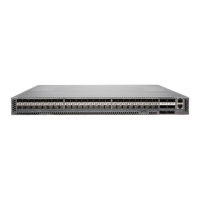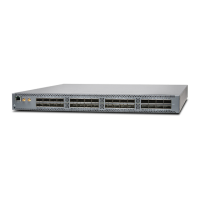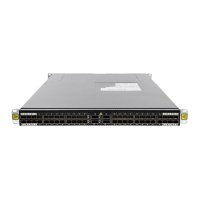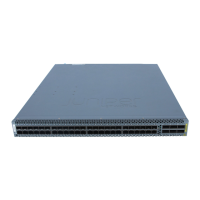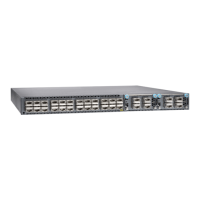Understanding Node Groups
Node groups help you combine multiple Node devices into a single virtual entity within
the QFabric system to enable redundancy and scalability at the edge of the data center.
This topic covers:
•
Network Node Groups on page 19
•
Server Node Groups on page 19
Network Node Groups
A set of one or more Node devices that connect to an external network is called a network
Node group. When configured, the Node devices within a network Node group work
together in tandem as a single entity. The network Node group also relies on an external
Routing Engine running on the Director group. This network Node group Routing Engine
runs the routing protocols required to support the connections from the network Node
group to external networks. By default, Node devices do not connect to external networks,
but instead connect to endpoints such as servers and storage devices. As a result, you
must configure a network Node group explicitly so that this entity may launch the network
Node group Routing Engine and connect to external networks.
In a QFabric system deployment that requires connectivity to external networks, you
configure one network Node group in the default partition for the QFabric system. Within
each network Node group, you can include a minimum of one Node device or a maximum
of eight Node devices. By adding more Node devices to the group, you provide enhanced
scalability and redundancy for your network Node group.
NOTE: The QFabric system allows you to configure a single network Node
groupcalled NW-NG-0 for the default partition. You cannot configure a second
network Node group inside the default partition. The remaining Node devices
within the default partition are reserved to connect to servers, storage, or
other endpoints internal to the QFabric system. These Node devices either
can be retained in the automatically generated server Node groups or can be
configured as part of a redundant server Node group.
Server Node Groups
A server Node group is a set of one or more Node devices that connect to servers or storage
devices. Unlike Node devices that are part of a network Node group and rely on an external
Routing Engine, a Node device within a server Node group connects directly to endpoints
and implements the Routing Engine functions locally, using the local CPU built into the
Node device itself.
By default, each Node device is placed in its own self-named autogenerated server Node
group to connect to servers and storage. You can override the default assignment by
manually configuring a redundant server Node group that contains a maximum of two
Node devices. You can use a redundant server Node group to provide multihoming services
19Copyright © 2012, Juniper Networks, Inc.
Chapter 1: QFX3000 QFabric Switch Overview
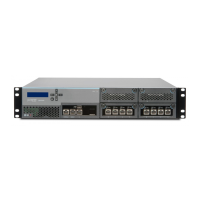
